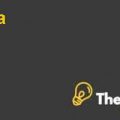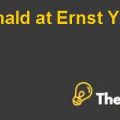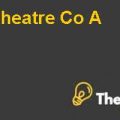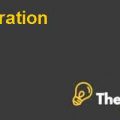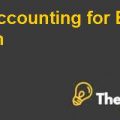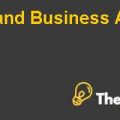
Income Statement
The income statement for the year ended 2010 for Royal Collection Inc. is shown below:
|
ROYAL COMPANY INC. INCOME STATEMENT 2010 |
|||
|
$ |
$ |
||
| Sales Revenue (A) |
1170000 |
||
| Related Party Sales Revenue (B) |
160000 |
||
| Net Sales Revenue |
1330000 |
||
| Less:Cost of Goods Sold | |||
| Cost of Beginning Inventory ( C) |
550000 |
||
| Cost of Goods Manufactured (D) |
750000 |
||
| Cost of Ending Inventory ( E) |
400000 |
||
| Cost of Goods Sold |
900000 |
||
| Gross Profit |
430000 |
||
| Less:Operating Expenses | |||
| Design Fee |
50000 |
||
| Advertising Expense |
150000 |
||
| General & Admin Expense (F) |
70000 |
||
| Total Operating Expenses |
270000 |
||
| Net Profit |
160000 |
||
| Dividends (G) |
- |
||
| Retained Earnings |
160000 |
||
Notes to Income Statement
Note A: The sales have been recognized for all the 2600 plates that were sold to the general public. According to revenue recognition principle in accounting, two criteria must be met before revenue is recognized in the income statement. The first is the presence of the critical event, which triggered the transaction and the second is the reliable measurement of the amount. Both the criteria are met here therefore; complete revenue has been recognized for the 2600 plates that are delivered.
Note B: According to IAS 24, Related Party Transaction, a company might enter into transactions, which may not be on an arm’s length basis. These transactions can occur with shareholders, friends or family. They can affect the financial statements. However, they are allowed provided disclosure is made. Therefore, the 400 plates sold to friends is a related party transaction, for which Royal received $400 per plate.
Note C: 2000 plates were in beginning stock; therefore, its cost has been calculated based on the 2009 cost per units every six months for 1000 plates.
Note D: 2000 plates were manufactured in 2010, for which the cost is based on 2010 rates.
Note E: 1000 plates were in ending stock, which have been valued at the cost per plate of the second six months of 2010.
Note F: The general and admin expenses are also valued at $ 10000 amount, which has not yet been paid by the company. This is according to the prudent concept, which says that expenses should be recorded conservatively.
Note G: It has been assumed that no dividend has been paid during 2010.
Balance Sheet
The balance sheet for the year ended 2010 for Royal Collection Inc. is shown below:
|
ROYAL COLLECTION BALANCE SHEET 2010 |
|||
|
$ |
$ |
||
| ASSETS | |||
| Non-Current Assets | |||
| Long Term Assets |
- |
||
| Current Assets | |||
| Cash (A) |
245500 |
||
| Accounts Receivable (B) |
315000 |
||
| Total Current Assets |
560500 |
||
| TOTAL ASSETS |
560500 |
||
| EQUITIES & LIABILITIES | |||
| Equity | |||
| Share Capital ( C) |
200000 |
||
| Retained Earnings |
160000 |
||
| TOTAL EQUITY |
360000 |
||
| Non-Current Liabilities | |||
| Balancing Figure (D) |
190500 |
||
| Current Liabilities | |||
| Accrued General & Admin Expenses |
10000 |
||
| TOTAL LIABILITIES |
200500 |
||
| TOTAL EQUITY & LIABILITIES |
560500 |
||
Notes to Balance Sheet
Note A: The cash has been collected for 2600 plates, including 400 sold to related parties and 1900 sold to the general public.
Note B: The accounts receivable represent the amount to be received for the remaining 700 plates sold to the general public.
Note C: It has been assumed that there has been no change in the share capital since 2008.
Note D: The non-current liabilities of the company have been calculated as a balancing figure.......................



